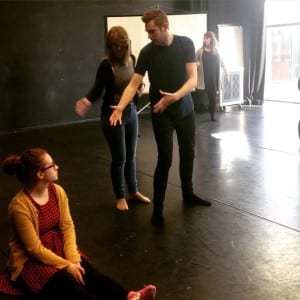In the past week I’ve been doing a lot of research into memory loss and specific case studies. After our talks about people’s stories and what they have achieved, memory seems to have been something that has resonated with the company so we all decided to focus on memory and specifically memory loss. The first thing I did was to explore the science behind memory loss which has been incredibly fascinating. One case study I came across is of a patient famously known as ‘HM’. I found out the following:
“His global amnesia for new material was the result of the loss of both hippocampi, and meant that he could not learn new words, songs or faces after his surgery, forgot who he was talking to as soon as he turned away, didn’t know how old he was or if his parents were alive or dead, and never again clearly remembered an event, such as his birthday party, or who the current president of the United States was” (Ogden, 2012).
Another case study I found talked about which part of the brain were responsible for memory loss and about associations between different neurological conditions: “the hippocampus, which is responsible for forming new memories and for retaining old ones is vulnerable to a wide range of neurological conditions, including not only head injury, but also Alzheimer’s disease, encephalitis, epilepsy” (Rath, 2014).
This brought my attention to the disease encephalitis, it was the only one in the list that I hadn’t heard of before. Before now if anybody had asked me to name diseases associated with memory loss, encephalitis would not be an answer, however it seems to be an incredibly severe disease are there are many famous case studies of people suffering from it.
As well as doing lots of research we also took part in an imagination workshop led by Michael W. this week. The point of the workshop was to come up with a nonsense story as a whole group (it was a very emotional tale of a poor pig who had bad breath and had no friends, but ended up with a wolf best friend). We then split off into two groups and developed it into performance. I worked in a group with Alice D., Naomi, and Rachel. What we created was very different to the other group although we both used a physical style. Another issue this exercise flagged up was that although we both had the same source material, the stories were represented slightly differently. This showed us that we need to be very careful if we are going to use case studies that we don’t change facts or misrepresent anybody.

Works Cited
Rath, A. (2014) From One Man’s Damaged Brain, A Treasure Trove Of Research On Memory. [online] Available from: http://www.npr.org/2014/12/28/373657735/from-one-damaged-brain-a-treasure-trove-of-data-on-memory [Accessed March 1 2015].
Ogden, J. (2012) HM, the Man with No Memory. [online] Available from: https://www.psychologytoday.com/blog/trouble-in-mind/201201/hm-the-man-no-memory [Accessed March 1 2015].







